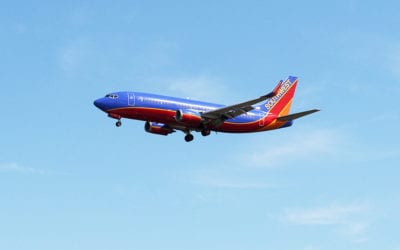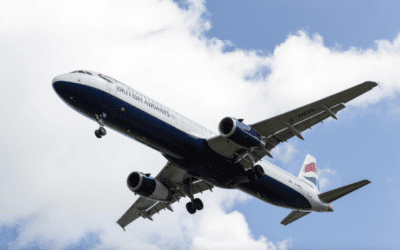If they haven’t heard it already, most frequent travelers will appreciate the semi-tongue-in-cheek definition of minimum connecting time, “The time it takes an Olympic sprinter to make it between gates.”
What airport takes the prize for most unrealistic flight connecting times?
Realistically, most airlines try to establish connecting times that real humans can achieve, because dealing with stranded passengers and luggage stresses the system as well as airport agents.
Yet, sometimes, there are legal connections that boggle the mind. For examples take a look at two poster children for unrealistic connections — 50 minutes between domestic flights in Chicago in the summer where there are afternoon thunderstorms and 75 minutes for domestic to international flights at New York JFK airport when passengers have to switch terminals (especially now with runway construction).
In additional, at some airports (Dulles comes to mind) long customs and immigration lines when international flights arrive simultaneously can mean either a smooth connection, or a complete nerve-wracking mess. I have had several reports from clients arriving at Dulles that being in business or first class and thus having a premium line and being first off the plane may be the difference between making and missing your flight.
My votes for the worst still go to European airports. The winner (or loser, depending on your point of view) is Frankfurt Airport, which for other reasons Charlie Leocha described as a “hell hole” for Europe-to-U.S. departures earlier this week.”
It’s not that there aren’t other contenders. Paris’s Charles De Gaulle Airport has a general one-hour minimum connecting time, even between terminals, and a transfer system that would never be accused of being user friendly.
And the old standby love-to-hate London Heathrow admittedly can be maddening. The between-terminals transfer system seems like a relic from the ’60s or ’70s. (Indeed, the whole airport, especially Terminals 1 through 3, has that feel at times.)
Any transfer involving British Airways to another carrier usually means a transfer between Terminal 4 or 5 and Terminal 1, 2 or 3. This, on paper (or a computer screen) doesn’t sound so bad until travelers realize Terminals 4 and 5 are basically in a different postal code from the others.
On the other hand, transfers between code-share and alliance partners at Heathrow are usually much easier, and there is the advantage for Americans of transferring through an airport with English-speaking staff.
At Frankfurt, on the other hand, it doesn’t seem to matter what connections may be. Whether passengers are transferring between say, two Lufthansa flights or two carriers with no real relationship, the experience seems at best irritating and at worst about as pleasant as a root canal.
Many of the gates are “remote,” meaning stairs and buses to even get to the terminal, then a line for passport control for those flying from the U.S., then another security line. (One traveler reported that last week there was exactly ONE x-ray machine for economy class travelers.)
Oh, and for premium travelers, the airline lounges are on the wrong side of security for some of the gates. At Frankfurt the misery seems to be semi-egalitarian. Many of my regular clients are fortunate enough to be able to fly business class — they have still missed their planes, even without any delays in their arriving flights. These days, if possible, I try to talk clients into at least a two hour connection.
I understand that security, reduced staffing for economic reasons, and perhaps antiquated airport terminal buildings can make smooth and quick connections especially difficult, which means these issues are not all the airlines’ fault. But given a situation where extra time is almost certainly required, why not be more realistic with published minimum connection times?
At this point savvy travelers can play the odds. Some willingly book connections they don’t think they will make, figuring they might get lucky, and failing that they have a backup flight in mind. But, many casual travelers cheerfully book flights they see online with no idea of what they are getting into, especially at an unfamiliar airport.
These less-frequent fliers are more likely to get confused and/or delayed. Additionally, they are also more likely to have no idea how to fix a problem. (Although maybe from an airline perspective, less likely to complain later and demand recourse can be a good thing.)
No doubt Consumer Traveler readers have their own picks for this booby prize of the “world’s worst connecting airport.” Feel free to share them in comments – it can help fellow travelers and be a cathartic vent at the same time.
Photo: Michael Krigsman
Janice Hough is a California-based travel agent a travel blogger and a part-time comedy writer. A frequent flier herself, she’s been doing battle with airlines, hotels, and other travel companies for over three decades. Besides writing for Travelers United, Janice has a humor blog at Leftcoastsportsbabe.com (Warning, the political and sports humor therein does not represent the views of anyone but herself.)




